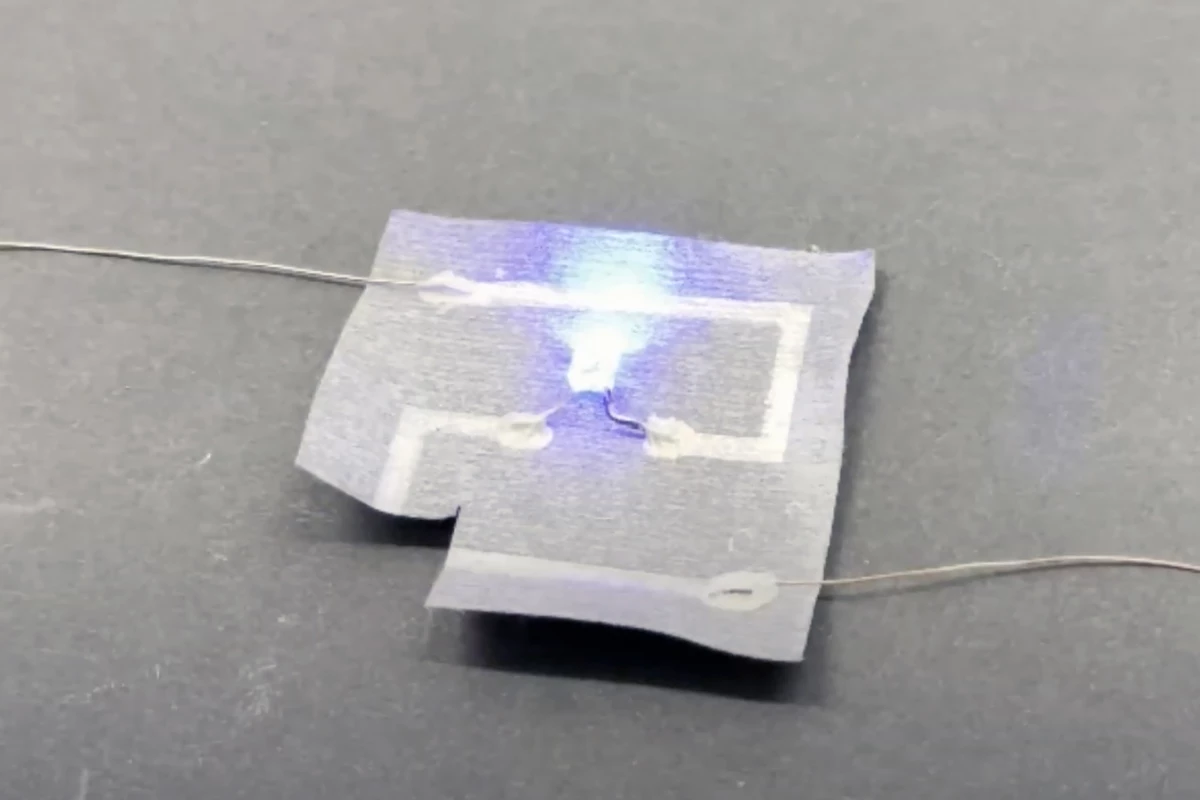Science continues to advance smart fabrics that respond to environmental changes, and provide more ‘services’ to their wearers. Now, a team of international researchers has created a wearable textile that repairs itself, is antibacterial, and could even be used to monitor a person’s heart rhythm. Researchers from the US, Australia, and South Korea created the highly conductive textile by dipping it in liquid metal (LM) particles.
LM particles have many advantages: high heat and electrical conductivity, low toxicity, and antimicrobial properties. The gallium-based liquid metals the researchers used as part of this study remain in a liquid state at room temperature, meaning that, unlike solid metals, they can be molded onto surfaces in unconventional ways.
The researchers dip-coated the fabric with LM particles, which ensured the textile’s pores were not clogged, making it ‘breathable.’ They found that applying force to the LM-coated textile ruptured the non-conductive, oxygen-based layer that formed after dip-coating, making the particles conductive.
Adding more coats of the LM particles made the fabric more conductive, and the pathways maintained their conductivity even when the fabric was cut.
“The conductive patterns autonomously heal when cut by forming new conductive paths along the edge of the cut, providing a self-healing feature which makes these textiles useful as circuit interconnectors, Joule heaters and flexible electrodes to measure ECG [electrocardiogram] signals,” said Vi Thanh Truong, corresponding author of the study.
Joule heating, also known as resistive, resistance, or Ohmic heating, creates heat by passing an electric current through a conductor.
The researchers used their new textile to make fabric ECG electrodes, used to monitor heart rhythm, and found they performed as well as commercially available gel-based electrodes.
In addition, the fabric protected against Pseudomonas aeruginosa and Staphylococcus aureus, two common bacteria responsible for causing hospital-acquired infections and known for their antibiotic resistance.
The researchers found that the more dip-coatings the textile had, the greater the anti-bacterial effect. After one dip, the textile inhibited S. aureus by 17%; after five dips, the percentage of bacterial inhibition increased to 90%. They say that the fabric’s ability to repel bacteria would prevent it from being contaminated when worn for extended periods or when it comes into contact with other people.
The researchers say the versatility of their unique textile makes it perfect for use in the hospital setting to create antimicrobial bedsheets and patient clothing that could prevent infection as well as monitor a patient’s heart.
The study was published in the journal Advanced Materials Technologies. The video below, produced by North Carolina State University, demonstrates how the textile creates new conductive pathways after it’s cut.
Source: Flinders University





